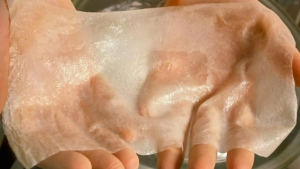If you’re new to the world of 3D printing or you have been in the game for a while, but your models aren’t printing how you want them to; then this article will aim to provide insight and some easy to follow steps to ensure that your next 3D print is a successful one.
If you are new to 3D Printing and know all about 3D modelling programs and slicers then scroll down to the steps below.
Design.
If you’re new to 3D printing, then there are a few things you need to keep in mind when making your 3D print.
For starters, you need to create a design. There are many programs and software out there that are absolutely free to use but may require some knowledge on how to use them if you want to be able to design a flawless print.
Some of the best programs to use are Sketchup, 3D Slash and Tinkercad. If you do not wish to create your own 3D designs, there are a lot of websites out there that allow you to download free STL files ready to print.
Slicing Software.
After you have your STL file ready for printing, you then need to download some 3D slicing software. Simplify 3D is a popular choice for 3D slicing programs. Slicing software is a very important tool to use because it takes your STL file and translates it into something that your 3D printer can understand. If you are on a budget and don’t have the money to invest in a 3D slicing program; then there are lots of free programs out there free of charge for you to use. Mattercontrol is one of the best 3D slicer programs out there.
Preparing for your Print.
Okay, so now you have everything sorted and ready to go. It is now time to prepare for your print. If you want to have a successful print with no issues, then do not overlook any of these steps.
Step 1: Bed Levelling.
First things first, you need to make sure your bed level is set correctly. It may depend on the model of your printer the ways in which the bed can be levelled. Some 3D printers need to be manually levelled, some have a switch and others may use inductive lasers. It is important to ensure that your bed is levelled correctly to avoid any printing fails.
Here is a video with a helpful tutorial for bed levelling; it works for most 3D printer models.
Step 2: Adhesives if Necessary.
Now that you have your bed levelled correctly, it is time to add some adhesives if you need any. Some materials require adhesives, some don’t, it all depends on the filament you are using. Some filaments need different adhesives.
Step 3: Loading your Filament.
The next step in the process of ensuring that you have a successful print is to start loading your filament. Make sure that when you go to load your filament that you follow the manual that came with your printer so you can make sure it is done correctly.
Some printers extruder motors are not on the head and others have the extruder directly on the head; it all depends on the printer model.
This is why it is important to follow your 3D printers manual for loading filament.
Step 4: Ready your Printer for Printing.
Now that your bed is levelled, necessary adhesives in check and your filament have been loaded correctly; it is now time to connect your printer and get the job started.
You can do this one of two ways; you can either insert an SD card into your printer, or you can plug you 3D printer directly to your computer.
Both of the connection methods have their benefits. If you connect your printer directly to your computer, then you can print directly from your slicing software and it means you can fix things up as you go. As good as it sounds, your computer might end up going to sleep or restarting for any reason, resulting in a failed print.
If you choose to go the way of the SD card, you cannot fix things up as you go; but you eliminate the possibility of your computer turning off.
You can Start Printing.
If you have followed these 4 steps, then you are more than ready to start your 3D print and it is more likely your print to be a successful one.



